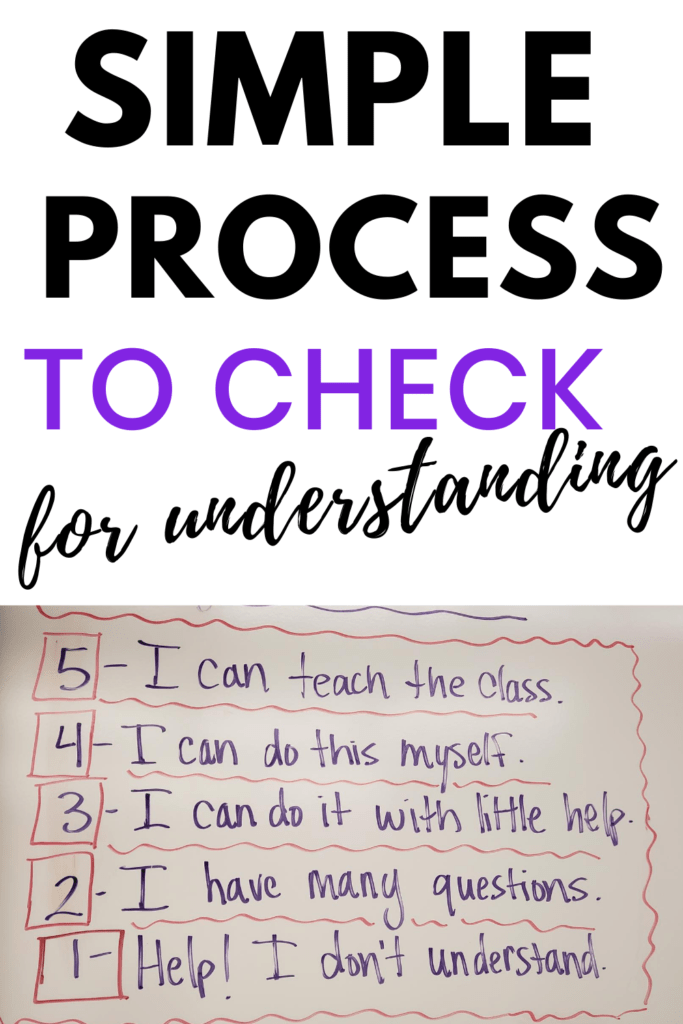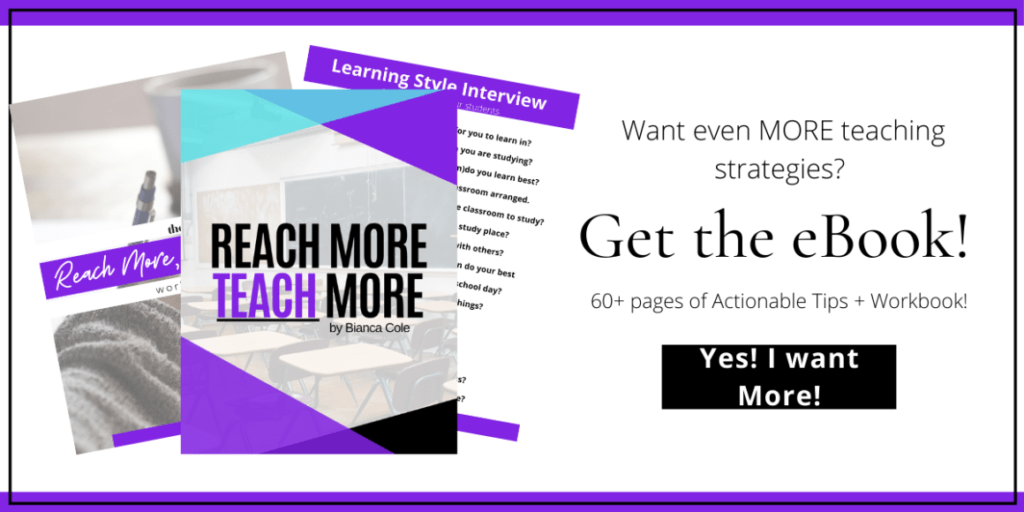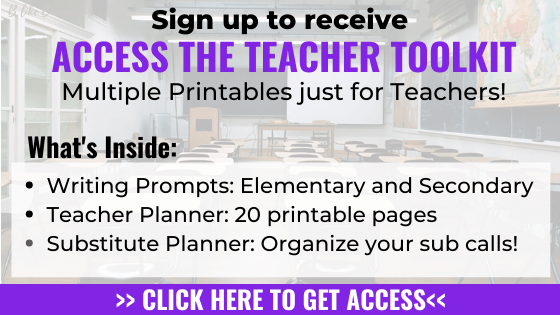How do we really know our students are learning? Across the board, I believe teachers question themselves a lot. I know I do. Thank goodness for PLCs, staff meetings (some of the time anyway) and if your classroom is next to your department buddies, even better.
Most of the time, teachers are in the classroom fending for ourselves like being on a little island. We believe that we are doing everything right or we may believe we are doing everything wrong, but teachers are known to just go with the flow. I remember telling a friend, who is not a teacher, that I was in a sense, my own boss. I run my classroom and what I said goes.
This sounds awful as I think about it, but it is essentially true. Except for one thing, I believe in my students not as workers.
You see, I always believed in being a facilitator in the classroom and letting students learn and question for themselves.
Most of the time during professional development meetings within school districts we analyze data. Almost too much… to see if our students are getting what we are giving them. This is usually after the fact we have already assessed them. At that point these students could still be in our classroom or not.
Generally, we think we have the answers with test scores, standardized assessments, and daily work. But as I grew as a teacher, I came to realize that sometimes I was moving along but everyone wasn’t with me for the ride.
It was daunting to think of how many students I might have left behind just trying to keep up with the scope and sequence of the school year. This is where I let time speak for itself. Not my student’s learning.
This is hurtful to just think about. Especially since I’m the type of teacher that talks about their success like I talk about getting out a sheet of paper every day.
Letting time speak for my student’s learning, instead of letting the learning speak for itself, is a terrible decision teachers make. You might think you need to get this curriculum complete this school year but what happens if nobody is learning, retaining, most importantly engaged?
I wasn’t advocating for my student’s need of learning or comprehending at all. The only way I thought was: “I need to get this done in 4 weeks, so I can move to this unit by next quarter…” I was just keeping up. Teachers, we’ve all been there at some point and some of you could be there now.
Strategies to Check for Understanding

I come to this perspective not only as a teacher but as a parent as well. Because the first thing we always want to do first is to advocate for our kids by speaking for them.
For example, my son was at the dentist and I was answering all the questions the dentist was asking him, instead of giving my son the opportunity to explain his own needs and curiosities. I was just moving things along as I used to in my classroom. I didn’t know he had questions about braces or didn’t know how the process worked.
Of course, there is nothing wrong with helping our children explain, but what happens when it is time for our kids to advocate for themselves, by themselves, alone? Like when they are at school?
Yes, time goes out the window for us teachers but this is where learning takes place.
I knew it was time, I had to do something different. Something in the moment, something that will not bring a realization of learning to me (i.e., we spend a week on this, let’s move on) but for my students as well.
I decided to give my students an opportunity to self-assess in the classroom using this chart below.

5– I can teach the class.
4– I can do this myself.
3– I can do it with little help.
2– I have many questions.
1– Help! I don’t understand.
I keep this little self-assessment chart on my board or on chart paper when I don’t have enough board room all year long. It is a quick check for understanding process that all teachers can use in all content areas and grade levels.
This chart has been amazing for assessment, self-advocating, classroom engagement, and most importantly overall, knowing if my students are learning.
Determine if Your Student is Engaged in the Learning
Now, before I move on in any lesson or activity, I asked each student to rate themselves. I do not move on in the lesson until I get all 4s or 5s. This type of feedback has helped me pinpoint standards in units where I need to spend time and others where I can easily move on.
The self-assessment not only helps assess each student quickly in the middle of a lesson as checks for understanding but also helps the student self-advocate for themselves. It assists them to speak about what they understand and don’t understand and to what level. This chart just makes it simple and easy for them.
Furthermore, this has become more routine for students to identify and advocate for their own learning needs. It can cross content and curricular areas in and even outside of school.
The best part is that classroom engagement has increased. Students are essentially grading themselves on how they are doing in the lesson. If they are feeling like a 1-Help! I Don’t Understand!, and as a teacher, you keep going with the lesson, their engagement goes out the window.
The chart has worked wonders as a special education teacher as we regularly assess for growth. I implement this chart in every lesson when writing progress reports on their individualized goals. It gives me feedback when writing their present levels of performance in the classroom.
Final Thoughts
I hope you give this chart a try and keep it up all year. You can easily create something simple for virtual learning as well.
Overall, I know you will have quick success with classroom engagement, in the moment assessment and student’s advocating for their own learning needs. You will be amazed to see what your students are really learning by checking for understanding regularly.
Please let me know if you give it a try! Send me a picture of the chart you have up in your classroom I would love to see it!
For Related Readings:




How exactly do you have the students “advocate” for themselves? How do the students relay to you when they assess themselves?
Hi Emily,
When I mean advocating, students will express verbally how they feel about their understanding with the daily objective using the chart as assistance. It makes students think about what their level of understanding is for meeting the daily success criteria.
In terms of assessment, if I have a student that says they are at a level (4)- (I can do this myself) I transfer that to a grade level of (B) where they are doing above average work and are getting the concepts so I can move on with my lesson. This quick moment of assessment is to see where they are in the lesson plan. If I get a lot of students that are saying they are at (2) or (1). I need to reteach with a mini lesson or differentiate my lesson to meet the needs of the classroom.
Thank you for your questions!
What grades does this work for?
Hi!
I have used this for 6th – 8th grades. My mentor has used it in her 3rd and 5th-grade classrooms as well and received great feedback. I think it would work well starting at lower grade levels so students can get in the habit of evaluating their own learning. Thanks!
When you ask the students to date themselves, how do you have them show you the number? I love this idea and would like to implement!!
*I meant “rate” (not date)!
Hi Lynne,
Great Question!
There are a few ways I have done this:
1. I have given my students a small post-it to have them write their number on it. I also can also ask for a bit of reasoning if they are a 1 or 2 just to see the exactly where they are having trouble.
2. In the moment, I will ask the class to show me 1,2,3,4, or 5 by holding up their hand, or as a class, I will ask ‘How many of you feel like you can teach the class?” and I have students raise their hands. Depending on how comfortable your class is with one another you might not get accurate results. If a couple of students are feeling like a 2 but the majority of the class is feeling like a 4 than those kids just may go along with the majority.
3. Another way is just having the class rate themselves by writing their number in the corner of their worksheet or assignment and having them turn in at the end of the class.
Hopefully, this helps! Let me know if you have any more questions!
I teach Sp Ed math – Algebra 2 (11th grade). I love this I do it in my math classes already. But I like the idea of keeping the meanings on the board or wall – and I also like 1 and 5. I usually do three (where they signal thumbs up, thumbs down or sideways. ). Thanks for sharing this. If you can lead me to more sped math resources it would be great!
Hi Shelle!
Thanks for the awesome feedback/comment…I love the thumbs idea. Great for ELL students too! I’ll email you some ideas for SpEd math later this week. Let me get it all together. Thanks again!